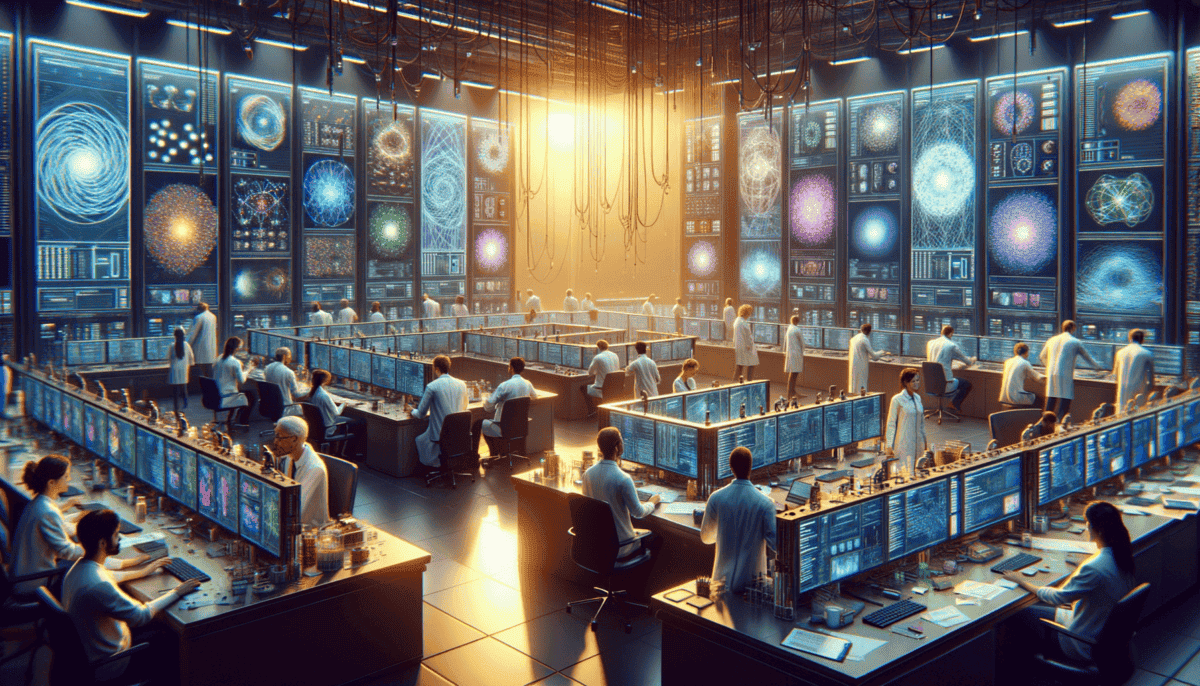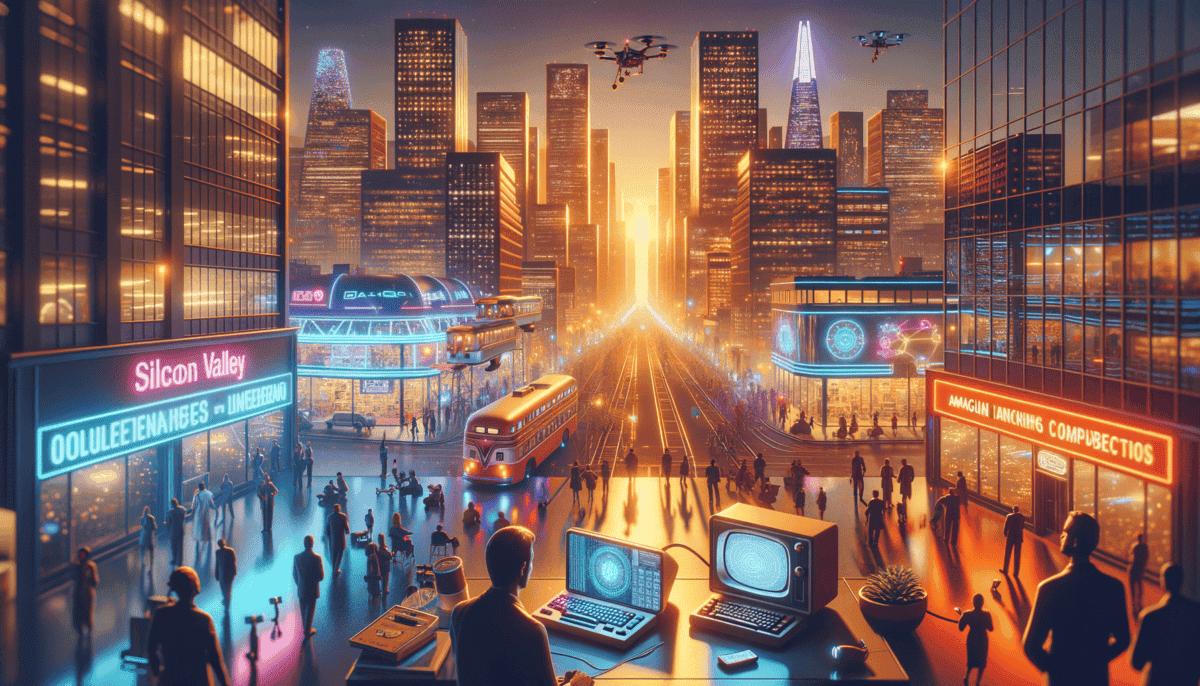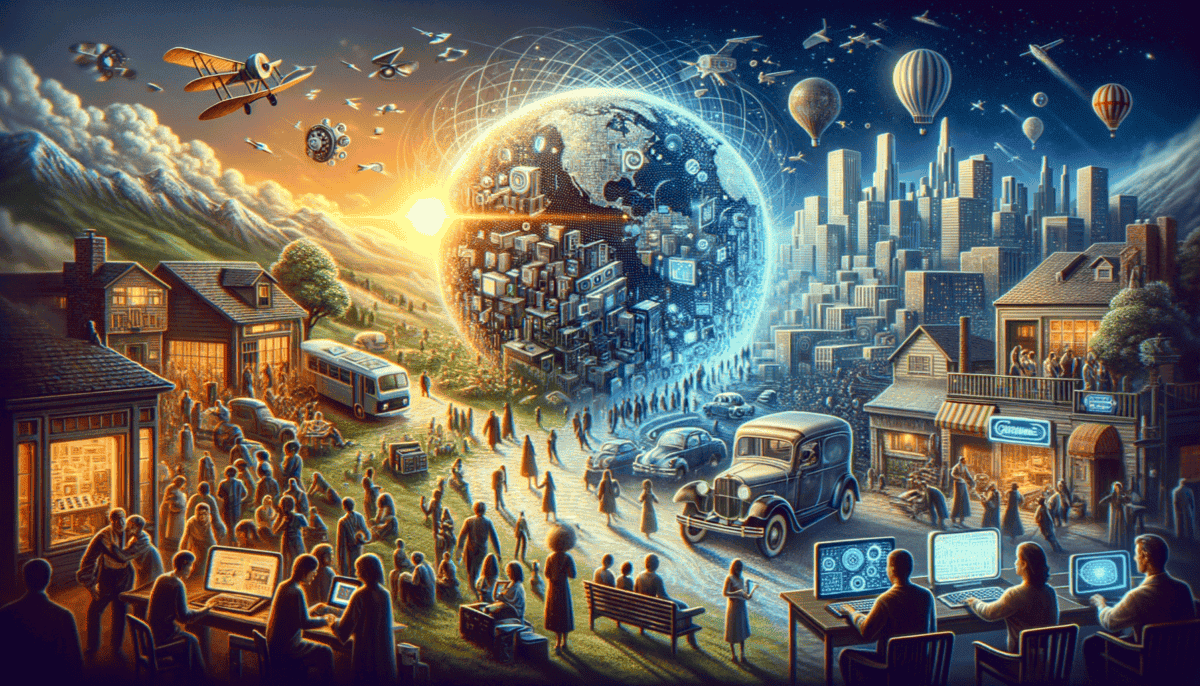The Seeds of Innovation
In a small room at a big school called Dartmouth College in 1956, something amazing happened. A group of very smart people met to talk about making machines think like humans. They were like explorers, but instead of looking for new lands, they were looking for new ways to make computers smarter!
One of these smart people was Alan Turing. He was like a superhero of computer science! Alan had a big dream – he wanted to see if machines could think. He created something called the "Turing Test" to check if computers could trick people into thinking they were talking to another person.
"Machines will one day be able to think just like us," Alan would tell his friends. Many people laughed at his idea, but Alan didn't give up.
Another important person was John McCarthy. He was like a wizard with computers! ♂️ John believed that computers could learn and solve problems just like people do. He worked very hard to make this happen.
“Why can’t a machine be more like a brain?” John would ask. This question made other scientists think in new ways.
These early computer pioneers faced many challenges. Back then, computers were as big as your classroom! They could only do simple math problems. But these smart people had big dreams:
• Make computers understand words
• Help machines learn from mistakes
• Create computers that could solve hard problems
• Build machines that could talk to people
• Design computers that could make smart choices
The First Big Steps
Young scientists started working on making smarter programs. They taught computers to play games like checkers and chess. It was like teaching a baby to walk – one small step at a time!
People started getting excited about these thinking machines. Some were scared, but others saw how helpful they could be. These early ideas were like tiny seeds that would grow into something huge.
Remember: Every big idea starts small! The work of these early pioneers helped create the smart phones and tablets we use today.
The room at Dartmouth College might have been small, but the dreams born there were enormous. These brave scientists showed us that with hard work and big dreams, we can make amazing things happen. Their ideas would change our world forever, but that was just the beginning of an incredible journey…
The story of AI was about to get even more exciting, as new inventors and dreamers joined the adventure. They would take these first ideas and build something nobody could have imagined!
Garage Dreams and Digital Frontiers
The year was 1976, and something magical was happening in California. In small garages and tiny rooms, young people were building the future!
Silicon Valley wasn’t always full of big companies. It used to be a place with lots of fruit trees! But smart young people had big dreams. They wanted to make computers that everyone could use at home.
“Why should only big companies have computers?” asked Steve Jobs. “Everyone should have one!”
At the same time, another young person named Bill Gates was working hard too. He and his friend Paul Allen started Microsoft in a small room. They wanted to make computers easier to use.
The Computer Revolution Begins
These new computers were different from the old ones. They were smaller – about the size of a microwave! And they could do fun things like:
• Play simple games
• Write letters
• Draw pictures
• Solve math problems
• Make music
But making these computers wasn’t easy. Sometimes things didn’t work. The inventors had to try again and again. They were like scientists doing experiments in their garages!
More and more people started getting excited about computers. They saw how fun and helpful they could be. Small companies called “startups” began popping up everywhere in Silicon Valley.
Fun Fact: The name “Silicon Valley” comes from the special chips inside computers. These chips are made from silicon!
The First Tech Heroes
These young inventors became like superheroes! They showed that you didn’t need to be rich or work for a big company to change the world. All you needed was a good idea and hard work.
They created special places called “incubators” where new inventors could work on their ideas. It was like a school for people who wanted to start computer companies!
“In Silicon Valley, dreams become real,” people would say. And they were right!
Every day, more people joined this exciting adventure. They brought new ideas and new ways to make computers better. The garage dreams were getting bigger and bigger.
The story of computers was changing fast. These brave inventors showed that sometimes the biggest ideas start in the smallest places. But an even bigger change was coming – something that would connect all these computers together in ways nobody had imagined…
The Digital Web Takes Flight
In 1989, something amazing happened that would change our world forever. A smart scientist named Tim Berners-Lee had a big idea – he wanted to connect all the computers in the world!
But the web needed a way to find things. It was like having a huge library with no way to find the books you want. That’s when two college friends named Larry Page and Sergey Brin had an idea.
“What if we could create a helper that finds anything on the web?” they wondered. That helper became Google!
Making Computers Smarter
Scientists started teaching computers to learn, just like people do! They called this “machine learning.” Here’s what these smart computers could do:
• Understand words we type
• Find pictures we want
• Answer questions
• Play games
• Help solve problems
The internet was growing faster than anyone thought possible! Every day, more people connected their computers to this big digital web.
A New Kind of Company
Google grew from a tiny company to a giant helper for everyone on the internet. They made it easy to find anything you wanted to know about.
Fun Fact: Google started in a garage too, just like Apple! Many big internet companies started small.
Other companies saw how helpful computers could be when they worked together. They started building new tools that let people:
Send messages instantly
Play games with friends far away
Share pictures and stories
Listen to music anywhere
Watch videos anytime
Teaching Machines to Think
Scientists were getting excited about making computers even smarter. They created special programs that could learn from lots of information, just like our brains do!
The internet was becoming more than just connected computers. It was turning into a giant brain that could help people in new ways every day.
“The internet is like a playground where ideas can grow and change the world,” said the inventors.
But this was just the beginning. Bigger changes were coming – changes that would make computers so smart, they could do things that seemed like magic!
Dreams of Thinking Machines
The year was 2012, and something amazing was happening in computer labs around the world. Scientists were teaching computers to think in new ways!
Two special companies led the way in making smart computers. One was called DeepMind, and the other was OpenAI. They had big dreams about helpful robots and thinking machines.
“We want to make computers that can help everyone,” said the scientists at OpenAI. “But we need to be careful and make sure they’re safe and friendly.”
Teaching Computers New Tricks
The smart computers could do amazing things:
Draw pictures from words
️ Talk like people
Play complex games
Write stories
Solve hard problems
A Special Game of Go
In 2016, something incredible happened. DeepMind’s computer, called AlphaGo, played a very hard game called Go. It beat the best player in the world!
Being Careful with Smart Machines
As computers got smarter, people started thinking about important questions:
How do we make sure smart computers are helpful and safe? What rules should they follow?
Important Rule: Scientists agreed that AI should always help people and never hurt them.
Building Better Helpers
Companies worked hard to make AI that could:
• Make cars drive themselves safely
• Help students learn better
• Keep people safe online
• Help save the environment
These smart computers weren’t just toys – they were becoming real helpers for people everywhere!
Looking to Tomorrow
Every day, the computers got a little bit smarter. Scientists worked together to solve big problems and make new discoveries.
But this was just the start of something bigger. The next chapter would bring even more amazing changes to our world, as AI became part of everyday life. ✨
The race to make smarter computers was on, but now companies knew they had to be careful and think about what was best for everyone. The future was looking bright, and full of possibility!
Digital Giants Rise
Welcome to today’s amazing world of smart computers! Big companies are using AI to do incredible things. Let’s meet the tech giants who are changing our world!
The Big Five Tech Leaders
Five super companies lead the way in making smart computers:
• Microsoft: Helps computers talk and write like people
• Amazon: Uses robots to help deliver packages
• Apple: Makes phones and gadgets smarter
• Meta: Creates virtual worlds with AI
Google’s Smart Helper
Google made something special called PaLM. It’s like a super-smart friend who can:
️ Talk in many languages
Write stories and poems
Solve hard math problems
Make pretty pictures
“We want to make computers that help everyone learn and grow,” says Google’s team. “It’s like having a friendly teacher in your pocket!”
Microsoft’s Cloud Magic
Microsoft built huge computer buildings called data centers. They’re like giant brains that help other computers think better! ️
Amazon’s Robot Helpers
Amazon uses smart robots in their big stores. These robots:
Pick up boxes
♂️ Move around safely
Keep track of things
Help human workers
Apple’s Smart Friend Siri
Apple made Siri, a friendly voice that lives in phones and watches. Siri can:
• Tell jokes and stories
• Set reminders
• Answer questions
• Play music
• Send messages
Meta’s Virtual Worlds
Meta is building special places you can visit using computer glasses. AI helps make these places feel real and fun!
“We want to help people meet friends and have adventures in new ways,” says Meta’s team.
Working Together
These big companies don’t just work alone. They share ideas and help each other make better AI. It’s like a big team working to make the world better!
Helping the World
These companies use AI to solve big problems:
Help save the environment
⚕️ Make better medicine
Grow more food
Make safer cars
The race to make better AI is exciting! These companies work hard every day to make computers smarter and more helpful. But they know there’s still so much more to discover and create!
Tomorrow’s Dreams Today
The future of AI is super exciting! Let’s peek into what’s coming next!
Smart Homes Get Smarter
Imagine your house being your friend! Future homes will:
• Cook dinner when you’re hungry
• Keep you safe and cozy
• Help save energy ⚡
• Play your favorite songs
Flying Cars and Helper Robots
Companies are making amazing new things! Soon we might see:
“Flying taxis will zoom through the sky, and friendly robots will help us at home and school!” says Dr. Sarah Chen, a robot scientist.
Learning Gets Fun
AI will make school super fun! You might:
Learn math by playing games
Visit ancient Egypt in virtual reality
Have a robot tutor
Make art with AI friends
Helping Earth
AI will help save our planet! Smart computers will:
Plant more trees
Clean the oceans
☀️ Make clean energy
Protect animals
Doctors Get Super Powers
AI will help doctors be even better at making people healthy:
⚕️ Find sickness faster
Make better medicine
Help more people
Use tiny helper robots
Being Safe and Kind
“We must make sure AI helps everyone and stays friendly,” says Ms. Rodriguez, an AI teacher. “It’s like teaching a new friend to be good and helpful!”
Working Together
The big tech companies promise to:
Help each other
Keep learning
❤️ Make the world better
Your Turn to Dream
The story of AI is just beginning! Maybe you’ll help create the next amazing AI invention. What would you build to make the world better?
As we wave goodbye to our journey through AI’s amazing story, remember that you’re part of this exciting adventure too. The best chapters are still waiting to be written – maybe by you!
Keep dreaming big, stay curious, and be kind. The future is bright, and it belongs to everyone who wants to make the world a better place with smart technology! ✨






